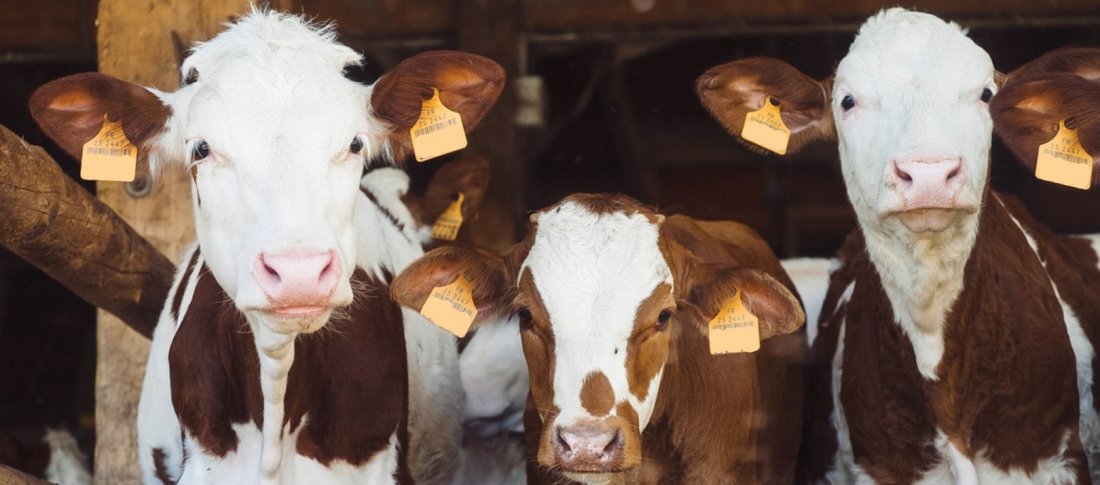From disease prevention to increased growth rates, housing dairy calves together can benefit both your herd and your farming business as a whole.
For generations, the received wisdom in the dairy farming community has been to house calves separately in individual pens or hutches. But the more research is conducted into group housing, the more the benefits become harder to ignore. With greater understanding of calf behaviour and herd welfare comes the realisation that it may be time for dairy farmers to explore grouping calves together.
What are the bovine benefits?
Like us humans, cows are social creatures. Left to its own devices a newborn calf will begin to form social bonds within the first week of life. Not just with its dam, but with other members of the herd too. It’s instinct. And depriving a calf of the opportunity to mix with other calves of a similar age can be detrimental to physical and emotional wellbeing, with several studies suggesting a link between social isolation and developmental problems.
But what benefits do calves derive from being housed together?
Less stress
Firstly let’s take a look at fear and stress. Calves raised in isolation show greater adverse reactions to change (such as housing changes or feed changes) – not just in early life but in later life too. To put it another way, the overall adaptation abilities of group-raised calves surpass those of individually-raised calves. As if to highlight this point, other research has shown that calves raised in a group show fewer stress responses during weaning and are less fearful when they are introduced to new groups later in life.
Calm cows come from social calves.
Better feeding and rumen development
Spurred on by the mere presence of one another, calves that are housed together will begin nibbling grass and ruminating from three weeks of age. Research has also shown that calves housed together consume more starter feed before weaning than individually-penned animals. That makes for better rumen development, which leads to better growth in the weeks around weaning.[i]
Later in life, calves that were raised in a more social environment will be less reluctant to consume new types of feed.
What are the business benefits?
It’s not just your bovine that benefit from group calving, but your bottom line too. Grouping calves together saves time and reduces labour. The system is also linked with increases in dry matter intake and average daily weight gain. That leads to healthier growth and a greater chance of good lifetime productivity and fertility. All of which is good news for the long-term outlook of your farming business.
What about health problems?
In days gone by, one of the main reasons for keeping calves apart was to reduce the spread of disease. On the face of it, that makes sense. After all, young calves have weak immune systems and are susceptible to infection. Yet while it remains good practice to house animals of different ages separately, research suggests that introducing calves to a group pen at less than 8 days of age has been shown to reduce the incidence of respiratory disease compared with introducing calves to the group pen at more than 8 days of age.[ii]
How big should the group be?
Calves should be housed individually for the first week of life, then merged into a pair or group from then onwards. Your group of calves should be no larger than 20. The optimum is around 12-15. It’s also best to keep the age range of your group of calves within seven days to reduce the chances of disease being spread within the group.
To avoid sharing air space with older animals and risking infection, try to house your group of calves away from the rest of the herd and keep the space well ventilated. And don’t forget to provide plenty of freshwater, from day one.
What next?
Social interaction from an early age appears to help calves learn different behaviours such as feed selection and grazing skills. It also helps them to mitigate stress responses and better tolerate changes to their feeding regime or other environmental factors later in life, while developing stronger bonding and social skills.
If you are interested in reaping the benefits of group housing of calves, the next step is to research computerised feeding. This allows the group to drink higher volumes of milk and in turn provides the calves with more energy for growth. Over to you!
[i] Jensen MB, Duve LR & Weary DM (2015) Pair housing & enhanced milk allowance increase play behavior & improve performance in dairy calves. J. Dairy Sci.98:2568-75
[ii] Medrano-Galarza C, LeBlanc SJ, Jones-Bitton A, DeVries TJ, Rushen J, de Passillé A, Endres MI & Haley DB (2018) Associations between management practices & within-pen prevalence of calf diarrhea & respiratory disease on dairy farms using automated milk feeders. J. Dairy Sci. 101 In Press
